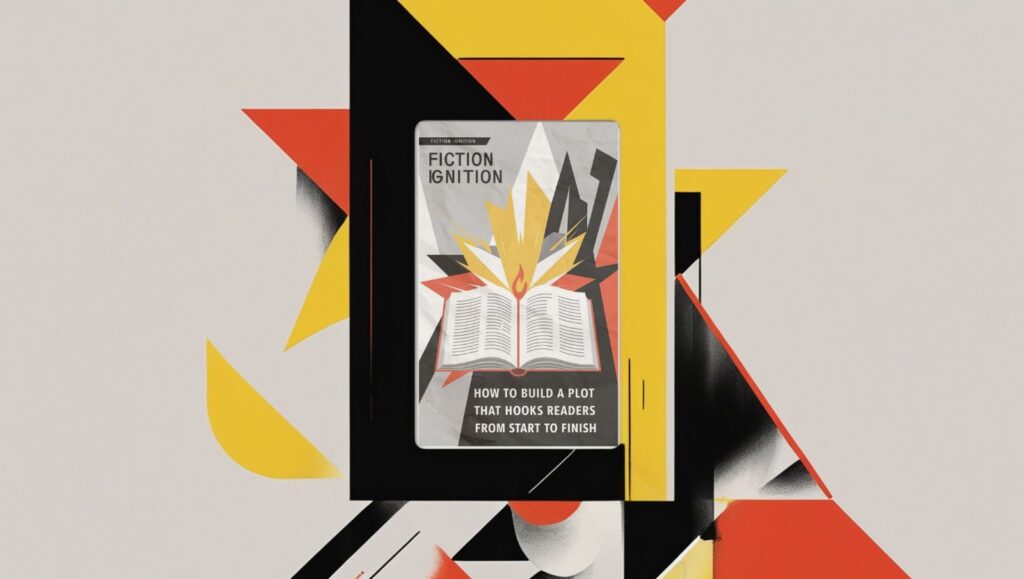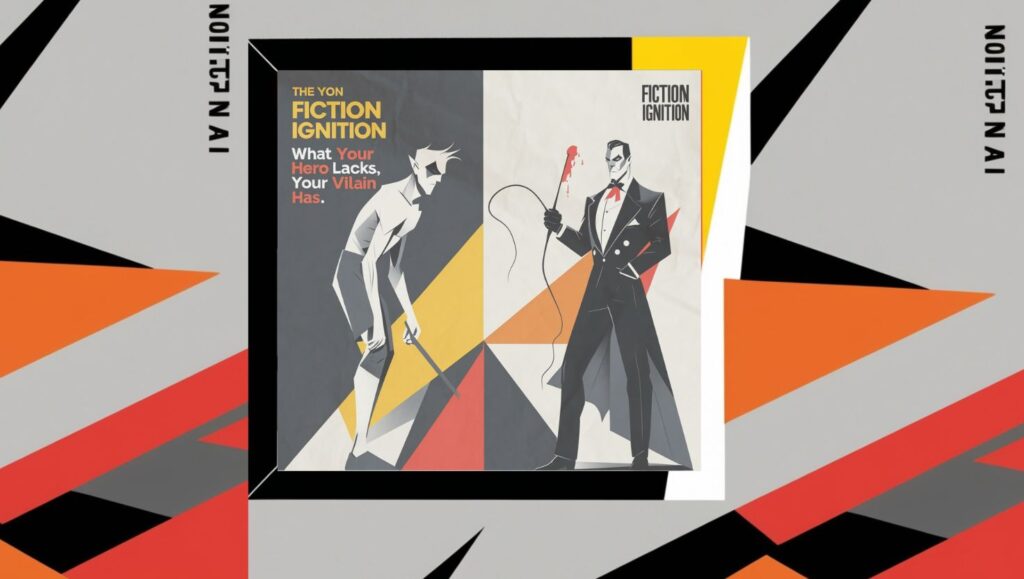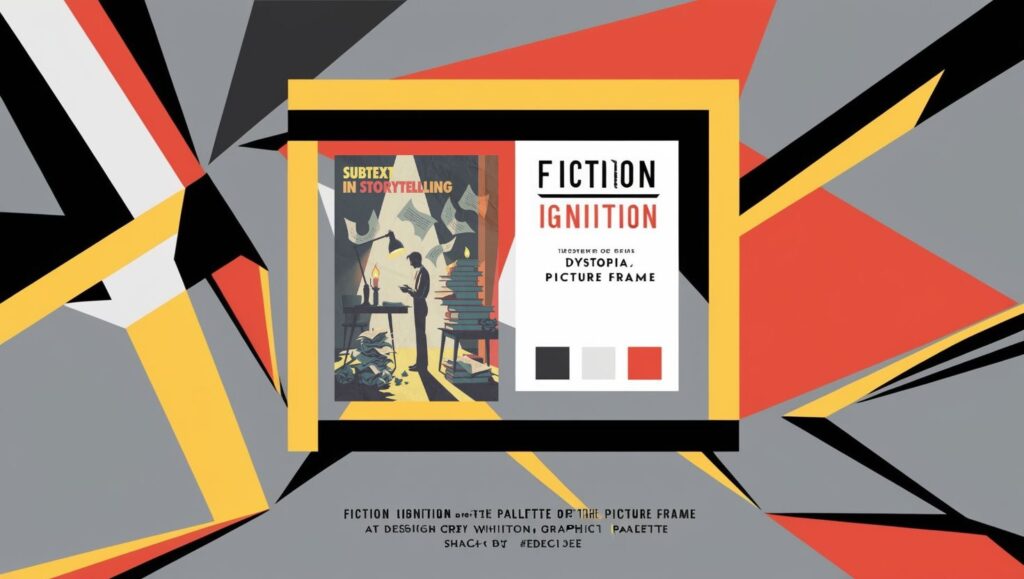Greetings, Fiction Igniters! Gather ’round, because today we’re diving into one of the most electrifying challenges every writer faces: building a plot so gripping, your readers won’t just turn pages—they’ll sprint through them! If you’ve ever wondered how to keep your audience hooked from the first word to the final period, you’re in the right place.
Now, I’ve got a confession. Plotting can be tricky. It’s like trying to build a rollercoaster: too many loops, and readers will feel dizzy; too few, and it’ll feel flat. But fear not, my literary pyromaniacs! Today, we’ll tame that beast together. Let’s light the match and ignite some storytelling brilliance.
Start with a Killer Hook
Your opening needs to slap readers awake. No slow builds here. Think about the first line of 1984 by George Orwell: “It was a bright cold day in April, and the clocks were striking thirteen.” Boom. In one line, Orwell sets a tone of unease and curiosity that pulls you right in.
ACTIONABLE TIP: Begin your story with an irresistible question or a moment of high stakes. Imagine a character dangling off a cliff (literally or figuratively) by sentence two. Or try the unexpected—a peculiar observation, a shocking twist, or a confrontation.
Map Out the Core Conflict
Conflict is your plot’s oxygen. Without it, your story gasps for air. Think of The Hunger Games by Suzanne Collins: Katniss’s journey isn’t just about survival—it’s a battle against an oppressive regime and her own moral dilemmas.
ACTIONABLE TIP: Ask yourself, what’s at stake for my protagonist? If they fail, what’s the worst that could happen? Then, crank up the tension. Make it personal—the kind of problem your readers will feel in their gut.
Curious Fact: Collins said she got the idea for The Hunger Games while flipping between reality TV and war coverage. That’s a masterclass in merging everyday experiences with high-stakes drama.
Plot Using the Rule of Threes
Three-act structure. Three big twists. Three disasters and a resolution. The number three has magical storytelling power, and it’s everywhere. Why? Because it’s simple, satisfying, and easy to follow.
Take The Lord of the Rings trilogy. In each book, there’s a clear beginning, middle, and end, with rising stakes and compelling twists that keep us hooked. Frodo’s journey from the Shire to Mount Doom follows a perfect arc.
ACTIONABLE TIP: Break your plot into three phases:
- Set-Up: Introduce your characters and their world. Hint at the trouble brewing.
- Confrontation: Throw obstacles and twists at your protagonist.
- Resolution: Deliver an emotionally satisfying ending that ties up loose ends.
Keep Readers Guessing with Twists
Oh, the twist—the juicy plot device that sends readers reeling! Think of The Sixth Sense. When the big reveal drops, it makes you rethink everything you’ve seen. A great twist doesn’t just surprise; it deepens the story.
ACTIONABLE TIP: Plant seeds early. Give subtle clues that seem innocuous but will blow minds later. Red herrings are your friends, too—lead readers one way, then pull the rug out.
Develop Characters Who Drive the Plot
Plot and character go hand in hand. A passive protagonist kills momentum faster than a wet match. Remember Walter White from Breaking Bad? His decisions—often terrible ones—fuel the story’s progression.
ACTIONABLE TIP: Give your protagonist clear desires and flaws. Let their choices shape the narrative. If you’re stuck on plot, ask: What would my character realistically do next?
Use Mini-Cliffhangers
Every chapter should end with a question that demands an answer. TV shows have mastered this art. Think of Stranger Things: nearly every episode ends with a bombshell, forcing you to hit “Next Episode.”
ACTIONABLE TIP: Make sure each chapter leaves readers wanting more. Introduce an unanswered question, raise the stakes, or reveal something shocking.
Weave Subplots Seamlessly
Subplots are like seasoning in a dish. Too many, and the flavors clash. Too few, and the story feels bland. Take Harry Potter and the Prisoner of Azkaban. The main plot’s all about Sirius Black, but subplots like the Marauder’s Map and time travel add layers without distracting.
ACTIONABLE TIP: Ensure your subplots connect to the main narrative. They should enrich the story, not sidetrack it.
End with a Bang
Your ending is the exclamation point on your masterpiece. Think of The Great Gatsby. That haunting final line, “So we beat on, boats against the current, borne back ceaselessly into the past,” leaves a lasting impression.
ACTIONABLE TIP: Aim for an ending that feels both surprising and inevitable. Tie up loose ends, but leave a touch of mystery if it suits your story.
Why This Works
Great plotting isn’t about reinventing the wheel. It’s about creating a seamless, emotionally resonant journey for your readers. Follow these steps, and you’ll keep them hooked, heart pounding, until the final page.
And remember: every time you sit down to plot, you’re not just telling a story. You’re building a world, igniting imaginations, and leaving your readers with something unforgettable. How’s that for a legacy?
So, Fiction Igniters, grab your pens, laptops, or trusty typewriters and start plotting! Remember, the fire’s already in you. Stoke it, nurture it, and let it burn bright.
Until next time: don’t write, ignite!









